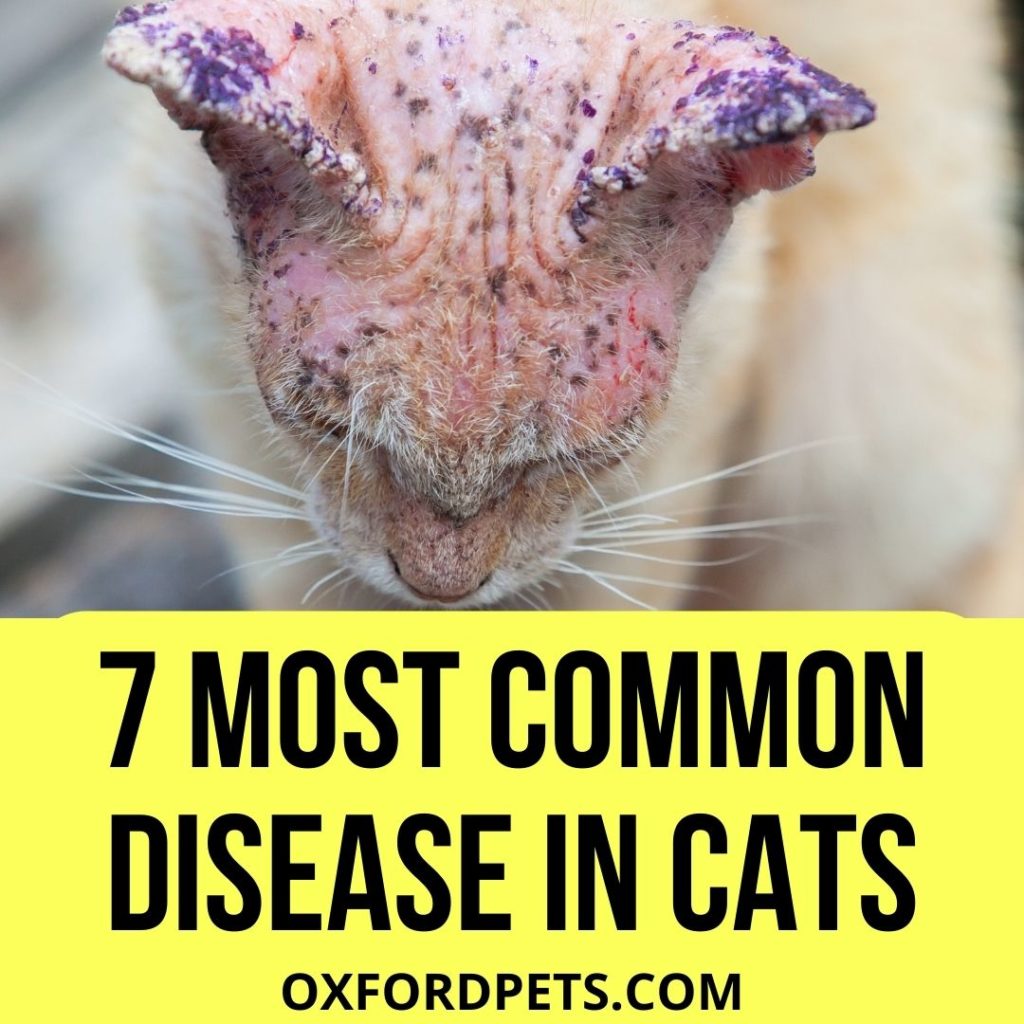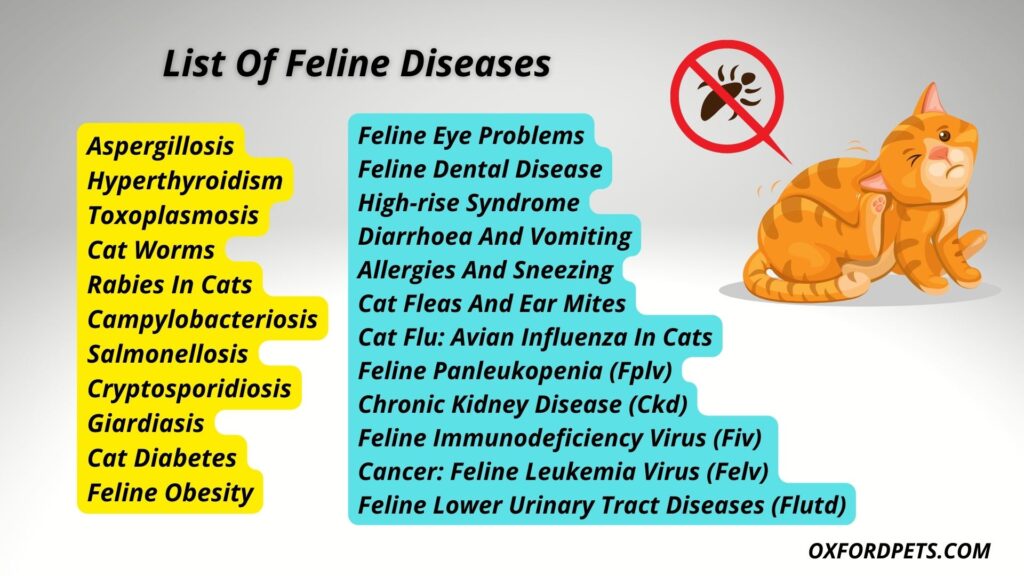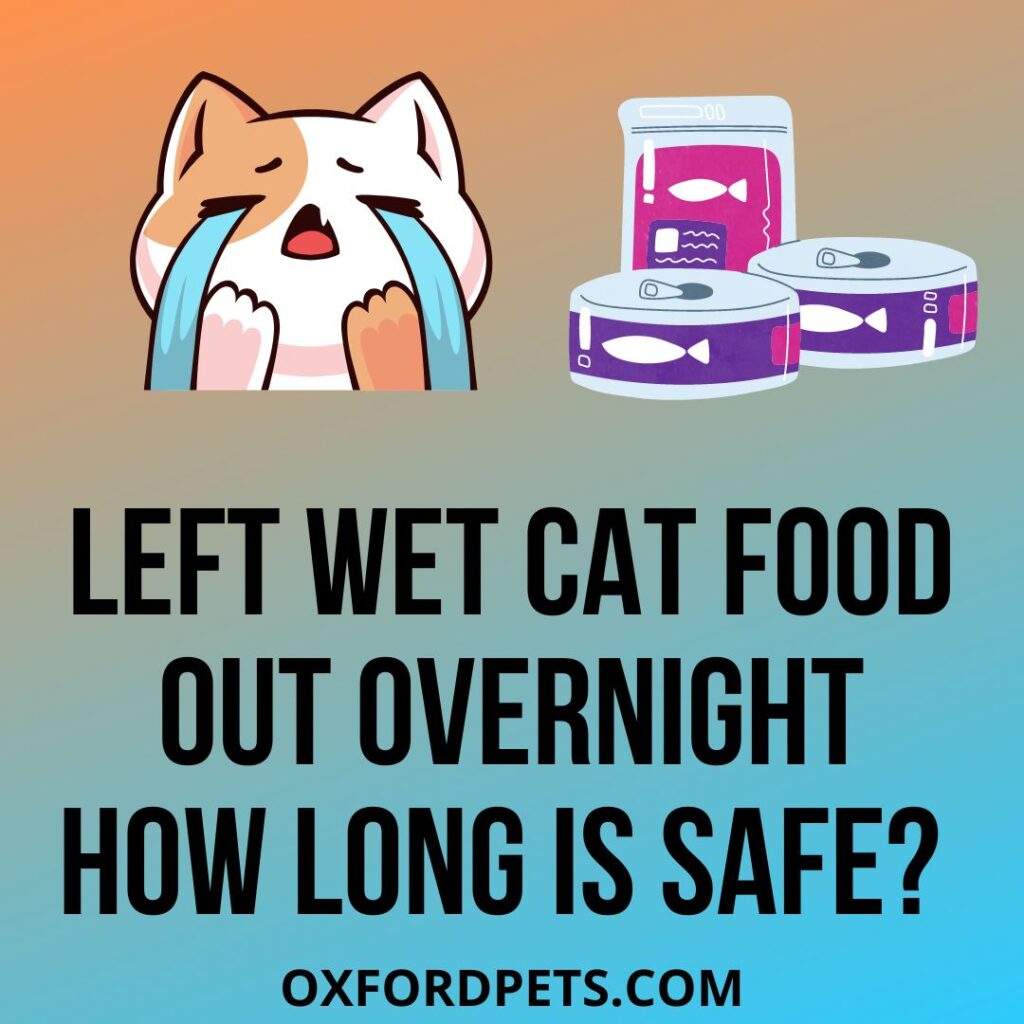Whether you already live with a cat or thinking of adopting or buying one for your family. However, it’s important to know some basic care for this animal as well as be aware of any possible problems that may develop as a living being.
A cat may suffer from a number of various diseases some more serious than others. This is why this article explains the 7 most common diseases in cats as well as other health problems in cats.

List Of Feline Diseases
- Aspergillosis
- Cat Flu
- Hyperthyroidism
- Toxoplasmosis
- Cat Worms
- Rabies In Cats
- Campylobacteriosis
- Salmonellosis
- Cryptosporidiosis
- Giardiasis
- Dental Disease
- Cat Diabetes
- Feline Obesity
- High-rise Syndrome
- Diarrhoea And Vomiting
- Allergies And Sneezing
- Cat Fleas And Ear Mites
- Food Allergies
- Avian Influenza In Cats
- Feline Panleukopenia (Fplv)
- Chronic Kidney Disease (Ckd)
- Feline Immunodeficiency Virus (Fiv)
- Cancer: Feline Leukemia Virus (Felv)
- Feline Lower Urinary Tract Diseases (Flutd)
- Eye Problems (Cataracts, Uveitis, Glaucoma Or Retinal Atrophy)

Feline Leukemia
This is a viral disease that can cause cancer. This virus can be transmitted from one infected cat to another once it is re-contacts with its bodily fluids such as saliva, blood, urine, or even lactation during pregnancy.
This virus does not transmit to other animals or humans, it only transmits from one cat to another cat. The virus directly affects to white blood cells of the cat, which are part of the cat’s immune system.
Once the virus affects the cat’s immune system, it eventually lowers the defence system of the body and your cat become more venerable to infection and other necessary complication.
Symptoms of Leukemia in Cats
- Weight Loss
- Loss of Appetite
- Fever
- Skin Lesions
- Swelling of the Lymph Nodes
Diabetics in Cat
Diabetics is another common disease in cats, this disease occurs if there is insufficient insulin response or either has an inadequate response to insulin or simply lacks this hormone.
However, this disease is curable, but if it’s left untreated it can bring a series of dangers to your cat’s health. If your cat shows any possible symptoms of diabetes you must take your cat to the veterinarian and have a good physical exam done.
Symptoms of Diabetics in Cat
- Drinking more water
- Peeing more than normal
- Hungry appetite
- Weight loss
- Weaken legs
Feline Dental
Feline dental is the disease of teeth and gum in cats. This is probably the most common disease in cats. In fact, more than 50% of cats that are more than 4 years old suffer from dental disease. However, the most common form of dental disease in cats is treatable or preventable.
The severity of dental disease in cats can vary significantly. If we do not treat this disease properly, it can cause a serious amount of pain, discomfort, and health problems.
There are mainly three forms of dental disease a cat may suffer from gingivitis, tooth resorption, and periodontitis.
Symptoms of Dental Disease in Cats
- Difficulty in eating
- Bad breath
- Weight loss
- Gum bleeding
- Eating slow
- Preferred soft food.
- Broken teeth
Vomiting
This is one of the most common health problems in cats. Vomiting can occur from eating something poisonous that causes the exclusion of stomach ingredients. However, keep in mind that there are lots of reasons why cat vomits.
There’s no particular or specific cause for vomiting. Something, when you travel with your cats in cars or planes, they can also vomit. These, are some possible causes of cats keep vomiting:
Diet: If you are feeding your cat poor quality food, which means a protein that comes from slaughterhouses like bird beaks, feathers, skin, eyes, etc. Although these particular food are considered a protein, these types of proteins can be very difficult for digest which results in vomiting in cats.
Allergies: Your cat can be allergic to some particular foods. If your cat is healthy, doesn’t lose weight, doesn’t act sick but still, keeps vomiting —then you need to be thinking of food allergy. Stop feeding your cat some food over and over, and bring changes to your cat food menu.
Feeding Milk: Something adding milk to your cat’s diet can cause vomiting. Because cat doesn’t have any appropriate enzymes for breaking down milk ingredients, especially cow’s milk. So, giving cat milk to its regular diet can lead to secondary GI symptoms causing vomiting.
Symptoms of Cat Vomiting (possible causes)
- Eating too fast
- Food allergies
- Disinterest in foods
- Diarrhea
- Liver disease
- Stomach parasites
Feline Rhinotracheitis
This is a deadly disease for any cat that directly can affect the respiratory system. If you have more than one cat, you need to act quickly to separate the affected cat from the healthy ones. This virus can be transmitted to other healthy cats if gets in contact with a cat that has feline Rhinotracheitis.
The virus that causes this disease is the strain of the herpes virus. This virus lodges in the airways of the cats, eventually causing infections to the respiratory system in a week.
It is estimated that more than 45% of different respiratory disease is caused by this virus. This is a common virus in cats that can cause respiratory disease.
Symptoms of Feline Rhinotracheitis in Cat
- Sneezing
- Nasal Mucus
- Lacrimation
- Fever
- Ulcers in the cornea
Feline Chronic | Kidney Disease in Cats
Chronic kidney disease is also known as chronic renal disease and chronic renal failure. Chronic renal disease damages the lining of the kidney and it gets worse over a period of time.
Chronic renal failure is one of the most common kidney diseases in older cats. In fact, chronic renal failure is one of the leading causes of death. Below is the list of certain breeds of cats that seems predisposed to developing chronic kidney disease:
- Persian
- Abyssinian
- Russian Blue
- Burmese
- Maine
Symptoms of Kidney Disease (Feline Chronic) in Cats
- Leaking urine (mostly at night)
- Drink lots of water
- Vomiting
- Body weakness
- High blood pressure
- Diarrhea
- Lack of appetite
- Weight loss
- Anemia
Feline Immunodeficiency (FIV)
Feline immunodeficiency is a type of virus that has a long incubation period before showing any types of symptoms in cats. Once this virus is triggered, the cat’s body is unable to stand any normal immune response.
FIV is the same class of viruses as HIV (human immunodeficiency viruses). However, humans cannot get infected with FIV and Cats can get infected with HIV.
FIV is mainly seen among free-roaming cats, especially males. This is a common disease in cats who like in the street. Home cats are much less likely to be infected with these viruses. Cats more than five years are more venerable to infection while the rate increases with age.
Feline Immunodeficiency (FIV) is mainly transmitted through bite wounds. Any type of casual contact doesn’t spread this virus. But infected mother cats can transmit these viruses during pregnancy.
FIV takes at least 6 months to one year before showing any types of symptoms of immunodeficiency.
Symptoms of Feline Immunodeficiency (FIV)
- Eye infections
- Inflammation of gums
- Upper respiratory disease.
- Fungal infection in the ears and skin
- Diarrhea
- Fever
- Disruption of normal sleep pattern
- Weight loss
- Chronic Kidney insufficiency.
Wrapping Up
All living being gets sick, and so as your cats. If your cats get sick, you have to find out the possible reasons, and what makes them sick. Hope this article will help you to figure out some of the common diseases in cats by their symptoms.
It is always suggested to contact a vet who specializes in cats. Perform a thorough medical examination of your cats twice a year.



